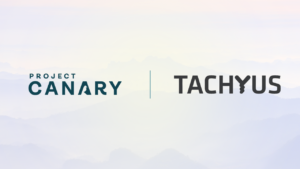You Asked. The Panelists Answered.
WEBINAR: The Registry Revolution for Differentiated Gas How PureWest Energy is Delivering Auditable Emissions Reductions with Certified Gas
After last week’s webinar with PureWest and EarnDLT, we wondered….what does the future of differentiated gas look like in the downstream market, and how can we navigate that constantly changing path? So many of us share the same mission – to bring high-fidelity data to the market and introduce decarbonized natural gas to utilities, hydrogen, refineries, and LNG, to name a few. But how do we square resources committed with ROI? And if premiums are never guaranteed, can they really be a part of our operationalized reality? These are just some of the relevant topics we discussed in the webinar. With only an hour to cover such a complex topic, there were more questions than we had time to answer. But fear not; experts from EarnDLT, PureWest, and Project Canary have compiled answers here to the questions we didn’t have time to answer live. Still left with questions? Reach out to Liz Arthur ([email protected]), who is working with the EarnDLT and PureWest teams to ensure no questions go unanswered.
REGISTRIES, TOKENS & MINTING
Recently there has been a surge of interest in registries within the oil and gas sector. If you are a gas marketer, historically, you didn’t leverage a registry but rather the NAESB contract (which now has a specific RSG addendum). But in the world of Responsibly Sourced or Differentiated gas, options are appearing, one being Earn DLT. Once an operator goes through the rigorous process of receiving environmental assessments, how can they open up new doors downstream? As Aaron Lohmann explained during the webinar, “Earn publishes this data in a very transparent and immutable way, meaning it cannot be changed once it is placed on the blockchain. Earn also takes steps to ensure that data cannot be double represented or double counted, and allows the retirement of that data once it has been essentially consumed and purchased by the ultimate consumer.” This new process of handing over ownership of a decarbonized molecule is at the forefront of the marketing scene.
Q: Is a CET (certified emission token) a similar format to a REC (renewable energy credit)?
A: Yes. A CET can be applied to a company’s GHG (greenhouse gas) reporting similarly to a REC , depending on the classification of the differentiated energy it represents.
Q: What volume of CET transactions does EarnDLT currently have on its platform?
A: Approximately 60 million tokens (MMBtu) are available on EarnDLT representing differentiated gas certified by Project Canary.
Q: Xcel Energy collaborates with Project Canary and will only buy low-carbon natural gas by 2030. Will this be achieved via CETs?
A: Yes. The CETs will deliver the verified carbon intensity data required to ensure that the gas purchased by Xcel Energy meets its established low-carbon goals.
Q: As a platform, does EarnDLT provide any clearing/verification services for the tokens?
A: Yes. The smart contracts enabling the transfer of the tokens from the seller to the buyer ensure that payments are cleared before releasing custody of the tokens.
Q: Is there a place in this process (certified gas/tokens) for midstream (gathering/processing/transmission/storage)? If CETs are fully decoupled from the gas, will midstream emissions/ESG have an impact now or in the future?
A: Yes. Midstream emissions are an important factor that buyers are looking for. EarnDLT and Project Canary have developed methods for certifying and tokenizing mid-stream data in compliance with the GHG Protocol Corporate Standard.
Q: What Carbon Registry (Example: Verra) or government entity (Example: Carb) has accepted CETs as an official Carbon Reduction credit?
A: CETs and QETs represent verified and immutable data and meet the Quality Criteria set forth by the GHG Protocol Corporate Standard. Based on a nine-month investigation undertaken by the Guardian, the German weekly Die Zeit, and SourceMaterial (a non-profit investigative journalism organization), it was determined that after analyzing a significant percentage of the projects on Verra, more than 90% of the rainforest offset credits represented – among the most commonly used by companies – are likely to be “phantom credits” and do not represent genuine carbon reductions. In contrast, CETs and QETs empower GHG reporting companies to acquire compliant market-based data that clearly represent validated, immutable truth pertaining to their specific energy consumption.
Q: Can PureWest or EarnDLT share any details around premium value of tokens and current demand?
A: There seems to be momentum growing for certified gas transactions, and these tokens offer a robust mechanism for transferring the attributes associated with certified gas. A number of similar transactions have been announced, but premiums have remained confidential as part of those deals.
Q: What does the producer report as emissions if the attributes are sold and retired by a buyer?
A: We (PureWest) will continue to report our emissions per regulatory guidelines. Because buyers can use these tokens to reduce their scope 3 emissions, which do not require regulatory reporting, there is no conflict in reporting.
Q: Will Earn DLT allow for retroactive registration of Project Canary certificates that have already been purchased – for example- if you purchased supplies from 2021-2022 and the certificates were not registered on any other platforms (e.g., Xpansiv)?
A: Within reason, the Project Canary | EarnDLT integration allows for the tokenization of prior production. EarnDLT will allow prior production of the 2022 vintage by the energy producer. If the production was represented on another platform (e.g., Xpansiv, MiQ, etc.), EarnDLT will need to ensure that the certificates on the other platform are eliminated prior to tokenizing the certificates on EarnDLT to avoid any chance of double counting.
Q: It appears that tokens serve as the delivery mechanism for both bundled transactions and unbundled transactions. Either transaction would require the emissions data to be transferred under a separate cover. Does the panel agree that it serves both purposes?
A: Yes. Tokens are the mechanism for delivery of the environmental attributes that qualify PureWest gas as certified or differentiated.
Q: Does Earn track where the physical molecule goes after it has been decoupled from the certificate? Or once decoupled that is no longer a linked product?
A: All molecules go into a shared pipeline regardless of the environmental attributes associated with their production. Decoupling these attributes from the physical gas gives maximum flexibility for end users and provides the most robust accounting for delivery of this environmental performance to a buyer.
Q: How do you avoid double-counting between CET and QET? Am I only allowed one or the other?
A: Yes. A producer of a token on the EarnDLT platform is only allowed to mint either one QET or one CET representing the differentiated MMBtu produced.
Q: Have Project Canary and EarnDLT worked with international producers? Are there any limitations for US buyers of tokens to acquire those that are related to international production?
A: Yes. EarnDLT and Project Canary are actively working with international buyers and producers of differentiated energy attributes. There are no known limitations for US buyers when ingesting tokens produced internationally.
Q: How do you think pricing of the token will compare to the spread between NG and RNG that companies like Archaea are enjoying?
A: The token price will directly correlate with the specific differentiated energy attributes represented. RNG will likely command a higher premium than certified NG based on current market conditions.
Q: Where is the actual emissions data stored? Who owns or has custody of the data? PureWest? Project Canary? Or EarnDLT?
A: Project Canary’s customers own the data. As they onboard with a registry, customers agree to allow Project Canary to share this data with the registry so that claims on the environmental attributes can be transferred.
Q: Do the EPA and SEC understand the registries and how they will support the IRA bill for determining methane intensity?
A: When discussed in a colloquy on the floor of the Senate during a debate about the Inflation Reduction Act, it was determined that tokens would be allowed to be included and evaluated in the carbon intensity of the differentiated energy represented. However, we still need the IRS to issue guidance that confirms that they got the message from the Senate colloquy. We’re optimistic that we’re going to receive IRS guidance soon.
GAS MARKETING
Marketing RSG or certified gas can seem daunting given changing regulations with the IRA, new options for tax credits (45V and 45Q), and new regulations in Canada. Education is critical as governments take time to decide what “empirical data” means and where Differentiated Gas will fall into tax buckets moving forward. Compliance is key, but creativity follows closely behind as operators find new ways to pair RSG and carbon offsets.
Q: One slide said PureWest is currently marketing 100% of the gas from well pads. Is PureWest selling all their certified gas?
A: This RFP package includes 100% platinum-certified gas. We market all our gas, including certified gas, through Uplift Energy.
Q: Can you expand on how utility buyers can engage on the platform? I work with a number of first-time RSG buyers who often ask about buying attributes, not molecules, for the reasons you stated. Is this the gas equivalent of RECs, or are there significant differences buyers need to understand?
A: Utility buyers can establish an account on the platform easily and at no cost. A request for a new utility buyer account can be submitted by completing the form found at https://earndlt.com/contact/.
Both RECs and RSG Tokens represent data attributes of the underlying commodity. The RSG token is a part of the US natural gas market and its retirement is always tied to the provenance of the assets involved. The retiring entity can always see where the MMBtu was produced, i.e., well, pad, basin, etc.
RECs are a part of the US electricity markets and are used in the compliance renewable electricity markets. RECs have met compliance requirements in multiple markets under multiple government agencies. Similar to RSG tokens, the RECs are tied to specific projects and locations. To date, RSG tokens have not received formal compliance approval, but they are rapidly being recognized as validation of reduced GHG impact.
Q: How is the well-level production that is certified reconciled to MMBtu of sales quantities to end users? Wet vs. dry sales gas volumes.
A: One token is tied to 1 MMBtu of energy, and EarnDLT mints on the fully reconciled final sales data, so the token is already reconciled. If we need to derive emissions data from methane intensity, we can do that with the BTU factor and gas composition. Most aren’t doing that, as the Subpart W emissions data are viewed as estimates due to their nature. When emissions monitoring moves to the site-level with continuous monitoring, they will be quantified and allocated from the facility to the well level in mT/MMBtu.
So far, our clients are primarily natural gas producers, and they are attributing 100% of the emissions to the natural gas stream, i.e., what goes into the midstream asset. There is an option for a producer to attribute a portion of the emissions to the NGLs. However, we have yet to see a market for that. EarnDLT’s token method is set up to give producers a lot of flexibility with their emissions data.
Q: Does PureWest market the different certification levels at different prices? For example, are they able to capture higher premiums for platinum vs. silver certifications today?
A: Transactions to date have been for platinum-certified gas, which we think is the most valuable. We believe that gold or silver tokens are also high-value, though will likely be discounted from platinum tokens.
RSG & SUPPLY CHAIN INTEGRITY
The question of quantified vs. estimated is ever present, leaving operators to choose their path forward, and the downstream market to determine the value of data integrity and transparency. Although this pairing can sometimes make you feel you are staring awkwardly across the gym at your 8th-grade dance, wondering who will be your match, it doesn’t have to feel that uncomfortable. Kelly Bott reminds us that a deeper understanding of the “Data, data, data, data” is the only path toward truly offering a top-tier product. Be bold. Ask others, “what does quantification mean to my molecule?”
Q: Are emissions calculated through direct measurement or GHG protocol?
A: Emissions are calculated using GHG protocol and direct measurement if direct measurement is available at a given site. Both estimated methane intensity and quantified (measured) methane intensity are reported to the registry.
Q: Can PureWest confirm that they are using quantification using Project Canary monitors to report their methane GHG emissions rather than using subpart W emission factors? I think she mentioned that during her introductory remarks.
A: CETs are based on EPA Subpart W submittal with PureWest calculation methodology and assumptions verified through the TrustWell process. The TrustWell process also includes consideration for stationary monitoring. We are working toward Quantified Emission Tokens, which will capture our monitoring and quantification of actual, on-the-ground methane emissions.
Q: What is the capital cost for the Project Canary installation on a per well/location basis, and how much does it add to your LOE on a $/mcf basis?
A: Our initial costs, including certification, monitoring, quantification/verification, and tokenization, are currently on the order of pennies per mcf, but we anticipate these costs coming down as we transition from pilots to full-field implementation.
Q: Will there be any transparency requirements? How can you guarantee that emission levels are authentic and accurate? How will errors be handled should they happen?
A: Estimated emissions are generated from GHGRP and are equivalent to emissions submitted for regulatory compliance. Accepted measurement technologies and Project Canary’s quantification engine go through controlled release testing to validate results. As technologies continue to improve and sensor performance characterization advances, Project Canary will include additional transparency to understand error and uncertainty. Finally, transparency comes from accurately labeling the data source to identify the methodology and technology used in deriving values.
Q: When do you expect to have quantification capabilities ready for the field?
A: Project Canary quantification capabilities are already in production for various sites, and these values can be digitally transmitted to the EarnDLT registry. PureWest has recently deployed field-wide stationary monitors and will work toward field-wide quantification in the coming months.
Q: After the field monitoring CapEx is amortized, what do we think the cost to certify the gas is per unit volume per mcf? And is there an economic break even for the field monitoring CapEx for the operator in light of the new revenue stream from sales of tokens? How did PureWest think about this from an economic standpoint to greenlight the FID?
A: See previous response regarding cost per mcf. PureWest has been tracking market demands, and our gas is primarily sold to west coast markets. We have heard the voice of the customer in demanding cleaner energy sources, so we are confident in responding to the voice of the customer in our decision to greenlight the FID.


